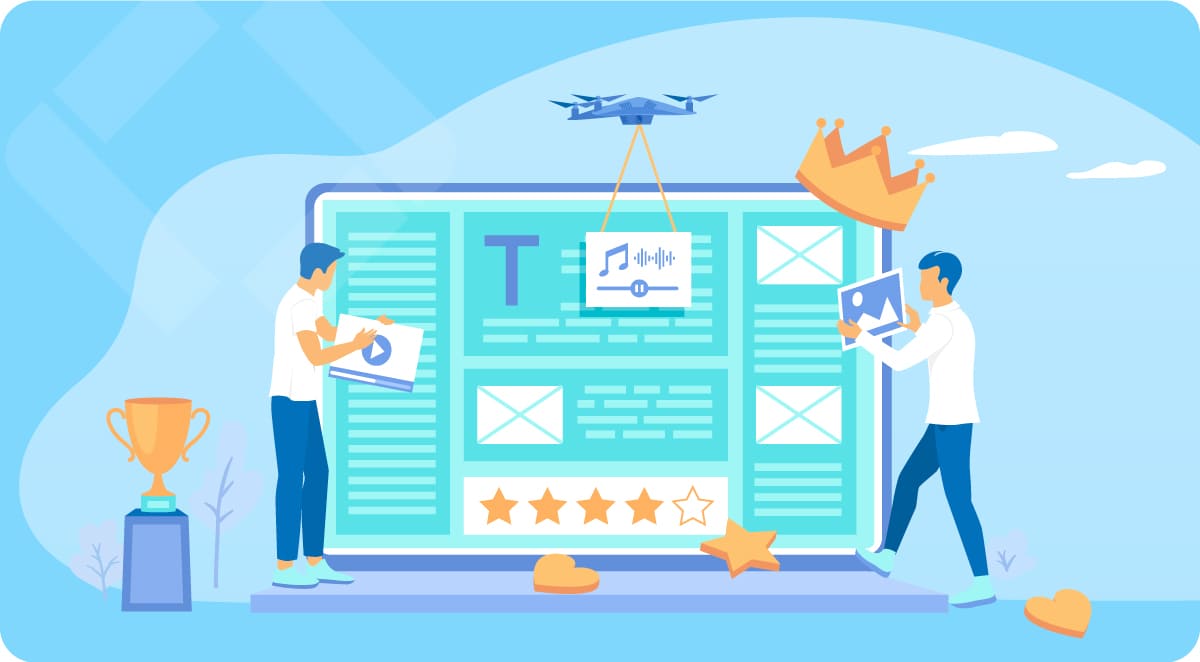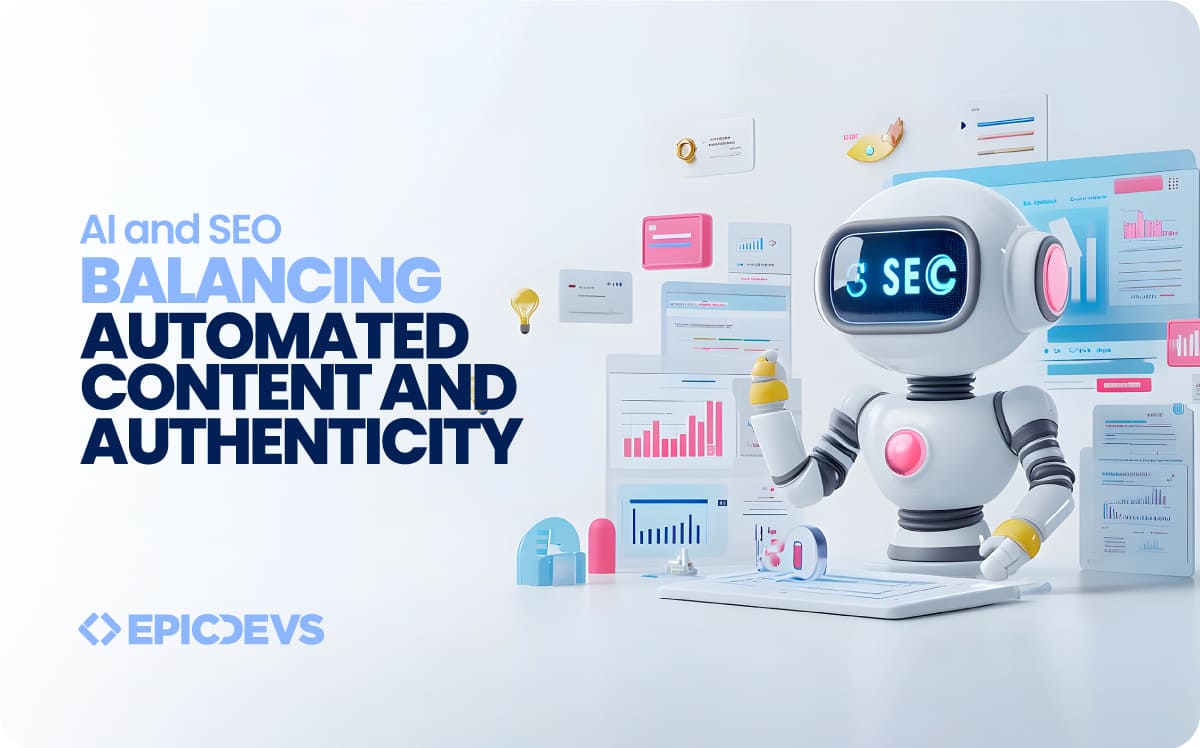Did you know that over 75% of marketing professionals are currently using AI to improve content creation, personalization, and targeting? (Microsoft) Clearly, Artificial Intelligence (AI) is transforming the content creation world, allowing marketers to create more content with much more efficiency. Why? In simple terms, AI is making it easier than ever to publish blog posts, social media updates, and product descriptions.
Tools like OpenAI’s GPT-4 and Jasper AI can produce human-like content in a fraction of the time it takes a person, or even less. However, while this sounds like a dream come true for many, relying too much on AI comes with not only ethical risks but authenticity issues – especially when it comes to maintaining quality and staying in line with Google’s guidelines.
But, how exactly can AI-generated content impact your SEO tactics, and how can you use AI responsibly to keep your content high-quality and compliant?
The Rise of AI-Generated Content
47% of marketers use AI tools to generate content at scale, and it’s no wonder why. (SiegeMedia) These machine learning programs analyze language patterns to create blog posts, social media content, or even detailed product descriptions. The appeal is clear: you can produce content with outstanding speed and efficiency. But as with most things that seem too good to be true, there’s a catch.
While AI can handle content creation at breakneck speeds, there are hidden risks, especially when it comes to SEO. The goal isn’t just to create content – it’s to create content that ranks, engages, and resonates. Let’s look at some of the challenges businesses face when over-relying on AI for content creation.
Risks of AI-Generated Content for SEO
1. Google’s Stance on Automated Content
Google is very clear: if content is generated by automation tools and doesn’t add value, it’s considered spam. This can lead to penalties, including the possibility of being de-indexed from search results, which is a no-go. Plus, Google’s guidelines specifically target low-value automated content, which is why simply letting AI run the show can backfire.
2. Low-Quality or Duplicate Content
AI tools, while great by themselves, can sometimes generate content that’s repetitive or lacks depth. And, as we said before, Google favors unique, high-quality content, so if your site is loaded with “thin” content (aka pieces that don’t provide meaningful value), you risk penalties. Even worse, if your AI tool unintentionally generates duplicate content, your SEO could take a hit.
3. Lack of Authenticity and Engagement
Another major downside to AI-generated content is that it often lacks the personal touch that comes with human writing. Readers can tell when content feels robotic, and they’re less likely to engage with it. And, frankly, we can’t blame them! Would you prefer to read a piece that you can feel connected to, or one that, simply put, feels cold and non-human?
Authentic, relatable content is what builds trust, engages users, and ultimately drives conversions. AI, for all its advancements and sophistication, can miss the emotional depth and cultural nuances that resonate with real audiences.
Don’t believe us? A recent study from NiemanLab found that when people know content is created by AI, they tend to trust it less. (NiemanLab) In fact, 80% of respondents said they want to know when AI is involved and, even when companies are transparent about using AI, the trust levels are still lower compared to content written by humans.

How to Use AI Responsibly in SEO
If you don’t want to give up everything AI has to offer in terms of efficiency, don’t worry. This technology can still be a powerful and successful tool when used smartly. Here’s how to leverage AI for efficiency without sacrificing the quality and authenticity that your audience – and search engines – want.
1. Use AI for Inspiration, Not Final Output
AI can be a fantastic tool for content brainstorming. You can use it to generate topic ideas, headlines, or even outline drafts. But the final version should always go through a human touch, and you should never – ever – copy and paste AI-generated content without proofreading and adding your own output first. This way, you keep the creativity, nuance, and engagement factor intact while speeding up the more tedious parts of the process, like searching online for information.
2. Stick to Google’s Guidelines
Whether you’re using AI or not, following Google’s rules is key to maintaining good SEO, as they’re the ones who set the rules. Focus on creating content that adds value, is informative, and serves your audience’s needs. This means creating content that actually answers your user’s questions. Also, avoid overstuffing keywords or relying on fluff just to hit a word count, and always fact-check AI-generated content to avoid potential misinformation – Google doesn’t look kindly on inaccuracies.
3. Blend AI Efficiency with Human Creativity
As we discussed before, AI can do the heavy lifting when it comes to repetitive tasks like data collection or generating basic text. However, the creativity, storytelling, and emotional intelligence needed to truly engage readers? That’s where humans shine and still hold the number 1 spot. You can definitely still use AI for efficiency, but make sure to always rely on human writers to infuse personality, relatability, and creativity into your content.
4. Always Review and Edit AI-Generated Content
Although it seems like it, AI is far from perfect, and the content it creates sometimes contains irrelevant information or errors. This is what’s known as “hallucinations,” a term used when AI makes up or includes inaccurate or irrelevant information. It happens because AI models, like ChatGPT or Google’s Bard, create content based on patterns from huge datasets.
But since those datasets can include outdated or wrong information, the AI sometimes ends up generating errors in what it produces.
So, before you hit “publish,” make sure you thoroughly review and edit anything produced by AI, check for tone, consistency, and overall accuracy. The goal is to make sure your content aligns with your brand’s voice and offers real value to your readers, not just to mass-produce content.
5. Prioritize Content Quality and Value
Everything you’ve read so far can be summed up in one sentence: no matter how efficient AI is, the priority should always be creating high-quality, valuable content. Google’s algorithms are designed to reward content that serves users, provides useful insights, and answers search queries thoroughly, not those that are published at scale just to hit the mark on the amount of articles you need to publish. So, while AI can definitely help speed things up, human expertise is still essential for ensuring that your content is meaningful and aligned with what users are looking for.

Final Thoughts: Staying Authentic in the Age of AI
There’s no question that AI can help smoothen the content creation process, but it’s also crucial to remember that quality and authenticity are still key. Google is getting better at recognizing low – quality, automated content, and the penalties for breaking these guidelines can be severe. So, by using AI responsibly – aka letting it handle the more routine tasks while keeping creativity and quality control in human hands – you can enjoy the best of both worlds: efficiency and authenticity.
At EpicDevs, we know how to strike the right balance between AI-driven efficiency and human creativity. Our own team uses AI tools to streamline processes while ensuring that every piece of content we produce is high-quality, relevant, and aligned with SEO best practices. So, if you want to boost your SEO strategy using AI without compromising quality, contact us today to get started!
